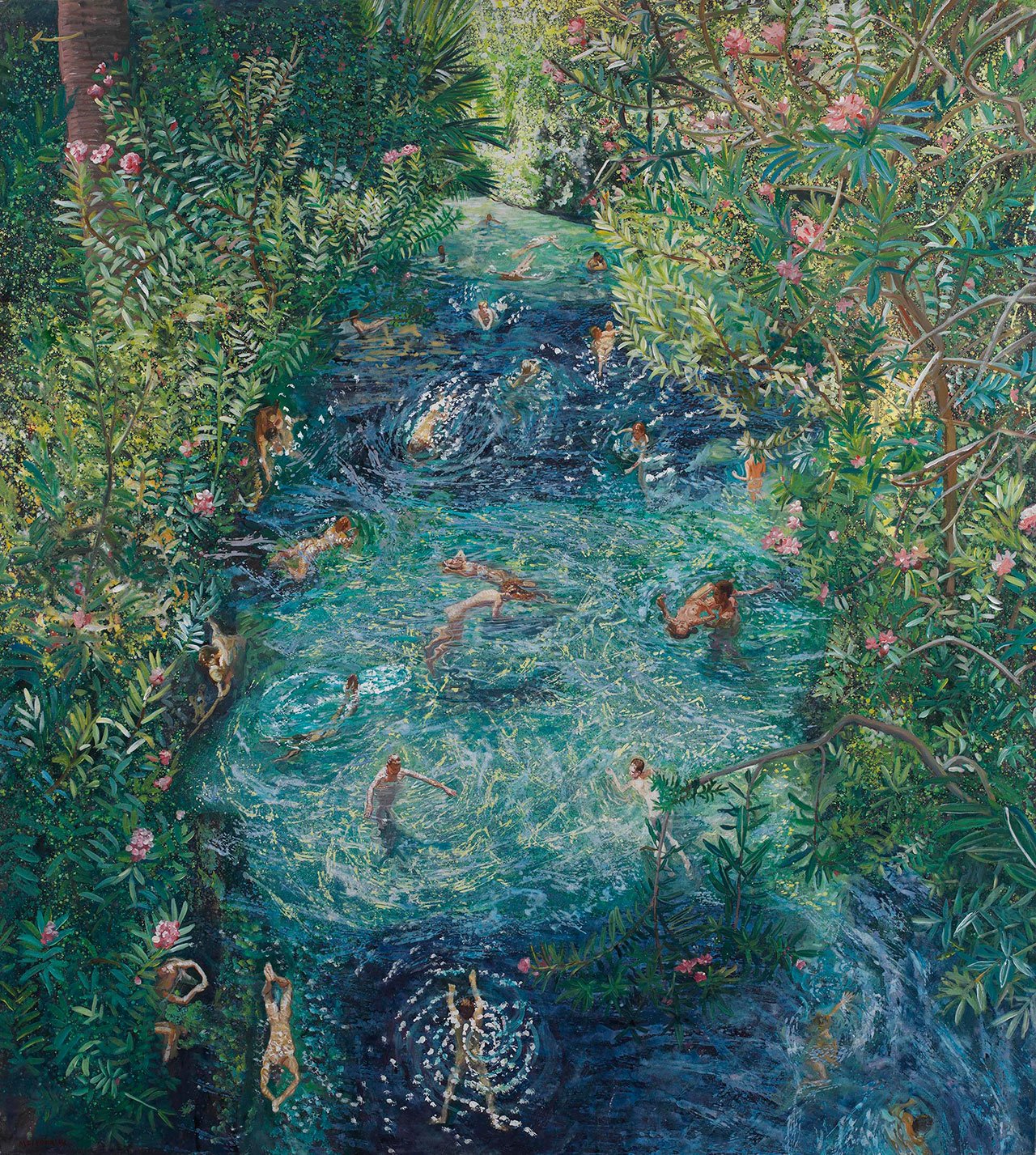
Maria Filopoulou, Ancient Pool, Ierapolis, 2009. Oil on canvas, 180 x 200cm.
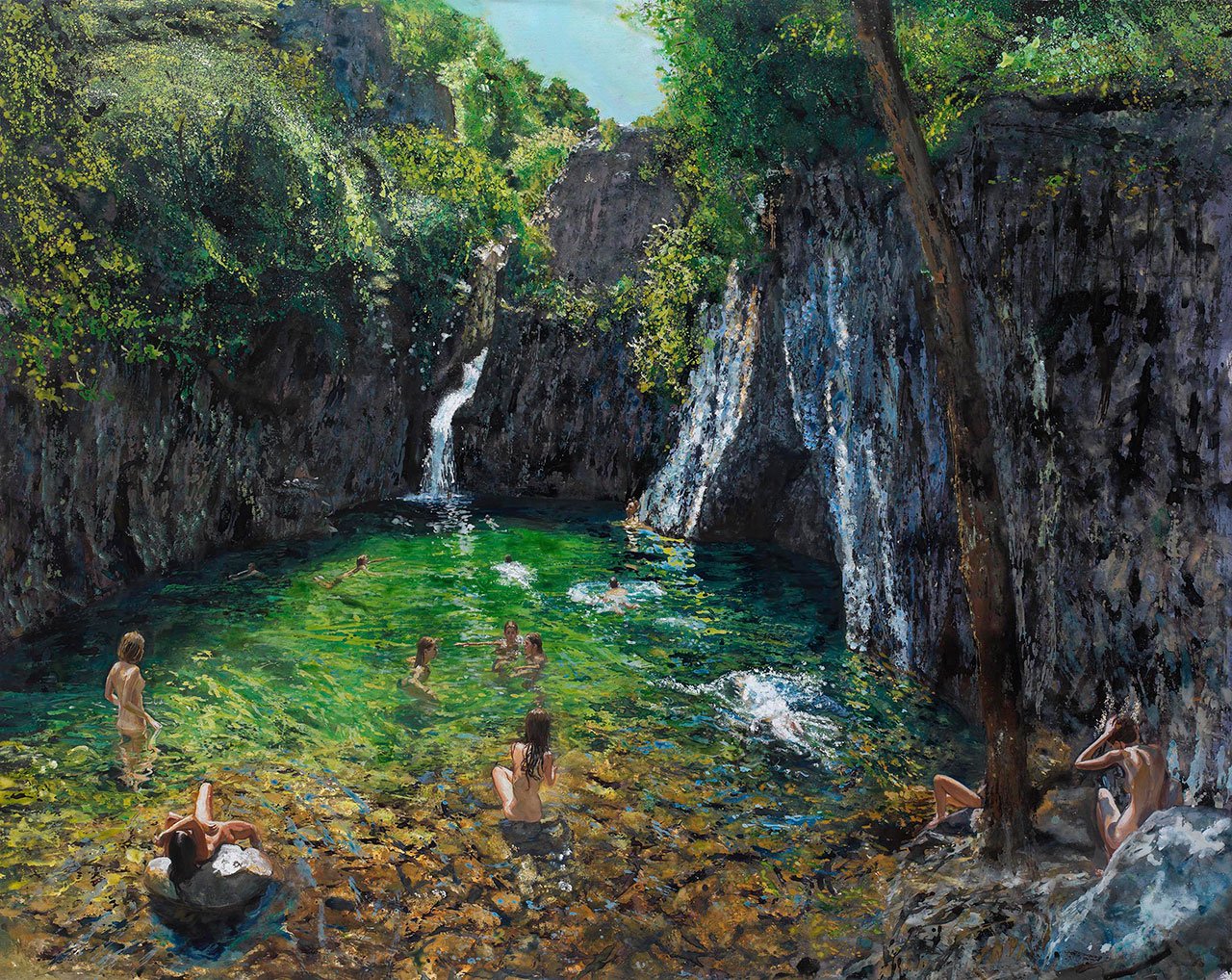
Maria Filopoulou, Initiates, 2010. Oil on canvas, 159 x 200cm.
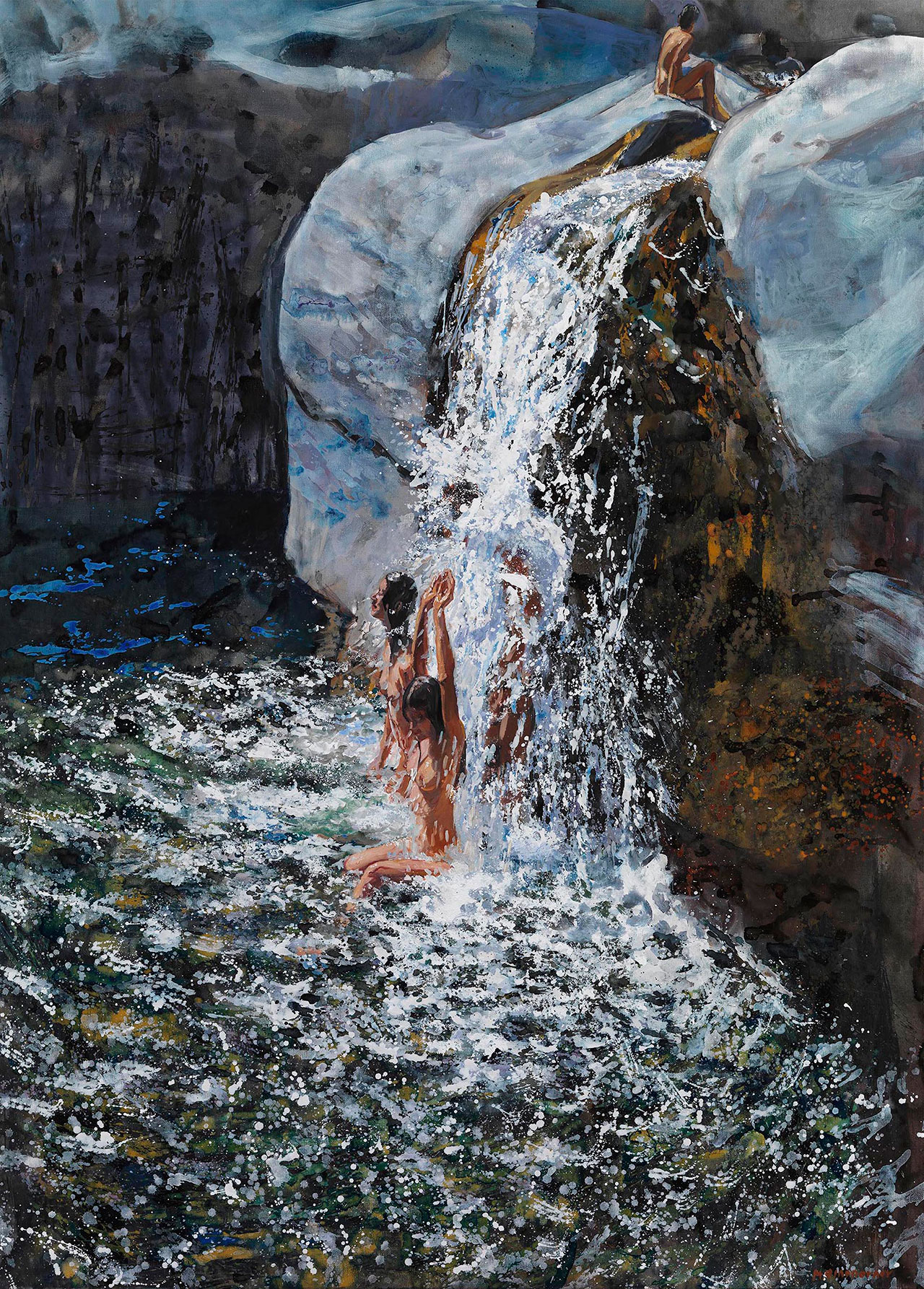
Maria Filopoulou, Elation, 2011. Oil on canvas, 128 x 92cm.
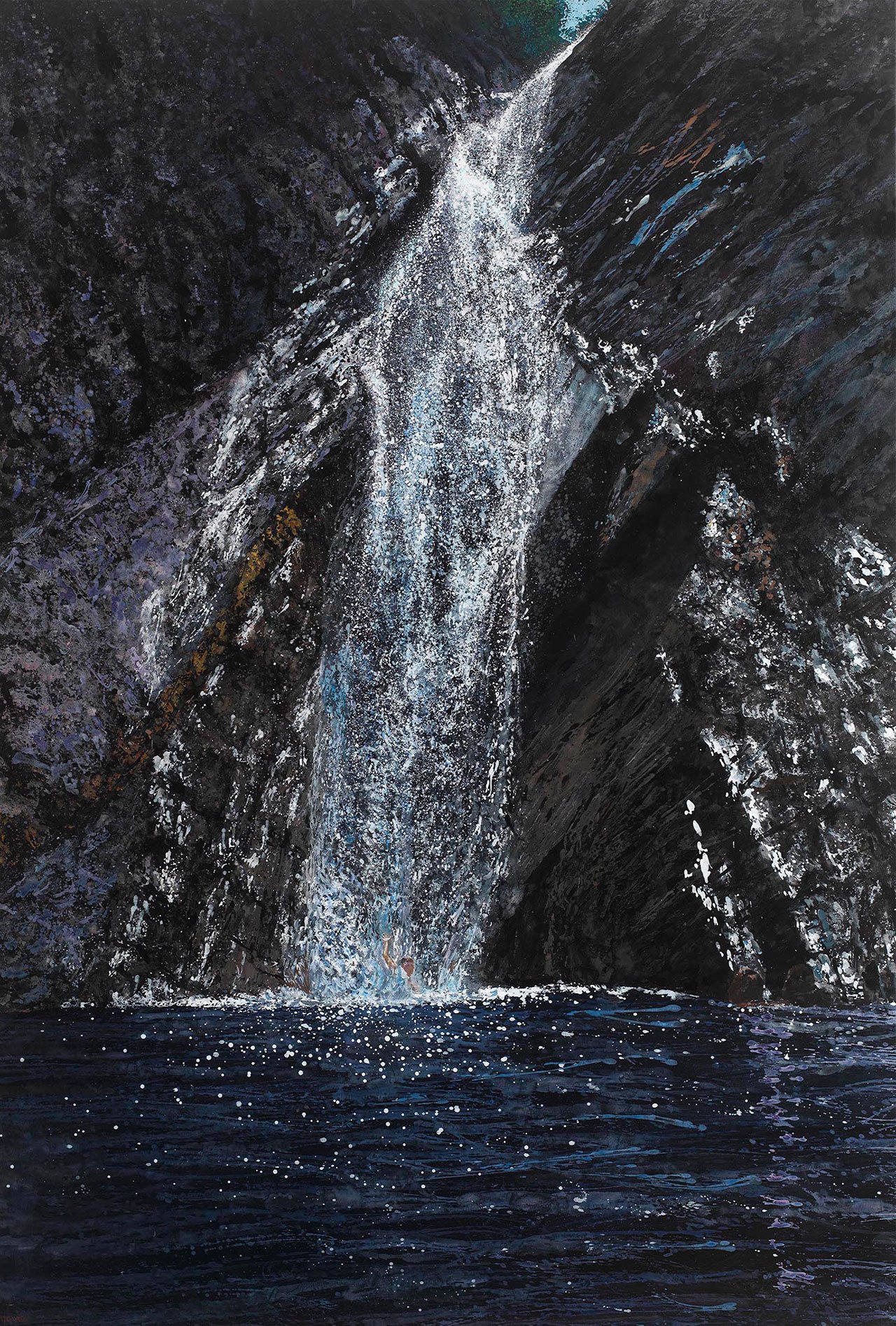
Maria Filopoulou, Flow, 2011. Oil on canvas, 135 x 200cm.
Filopoulou has been painting since she can remember, and moved to Paris in 1984 to study at the prestigious Ecole des Beaux-Arts. She had her first solo show in 1990 and hasn’t stopped since; in fact, her current exhibition at Galerie Dutko in Paris is her twentieth. (“You could say that I’m turning twenty this year”, she laughs.) Her living room is filled with her work: huge paintings of seascapes, each as big as a wall. “The sea is important to me, and Kifisia is far from the sea, so I tried to bring a bit of the sea here!” Evidently, the sea is her obsession: “The water is a relief for me. I enter the sea and I forget everything”. Her water-themed works include not only seascapes and swimmers, but also a series of paintings inspired by the famous waterfalls of Samothrace. Once a sacred island where people would go and participate in holy rites, the Greek island of Samothrace is home to many cascades and pools. “With the waterfall series I wanted to focus on the constant flow of the water in contrast to the immobile body of the bather”. What is striking about these waterfall pieces is the accuracy and delicate precision Filopoulou renders every splash and glint of the water with, as if she were a water goddess herself who conjures the roaring water on the spot.
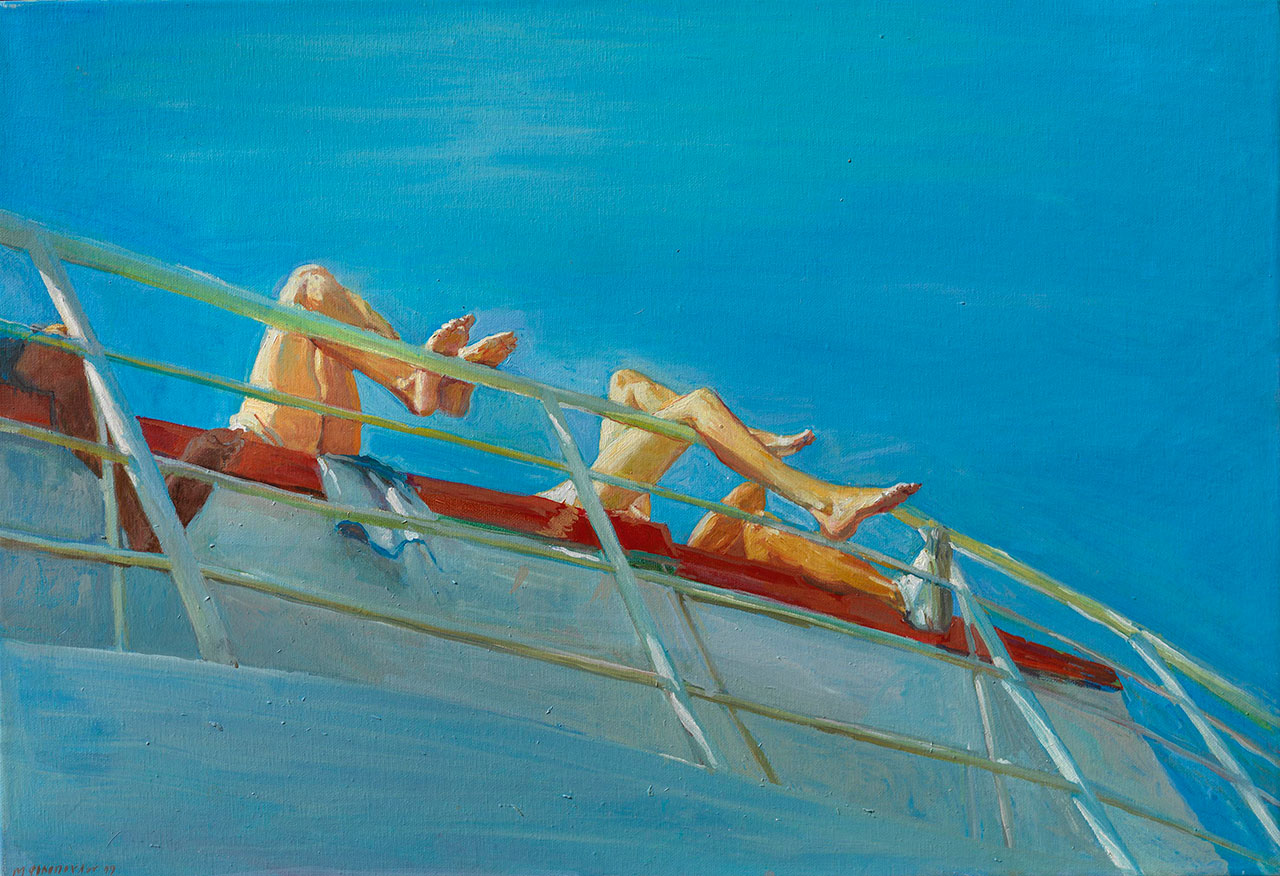
Maria Filopoulou, On the boat, 1999. Oil on canvas, 50 x 90cm.
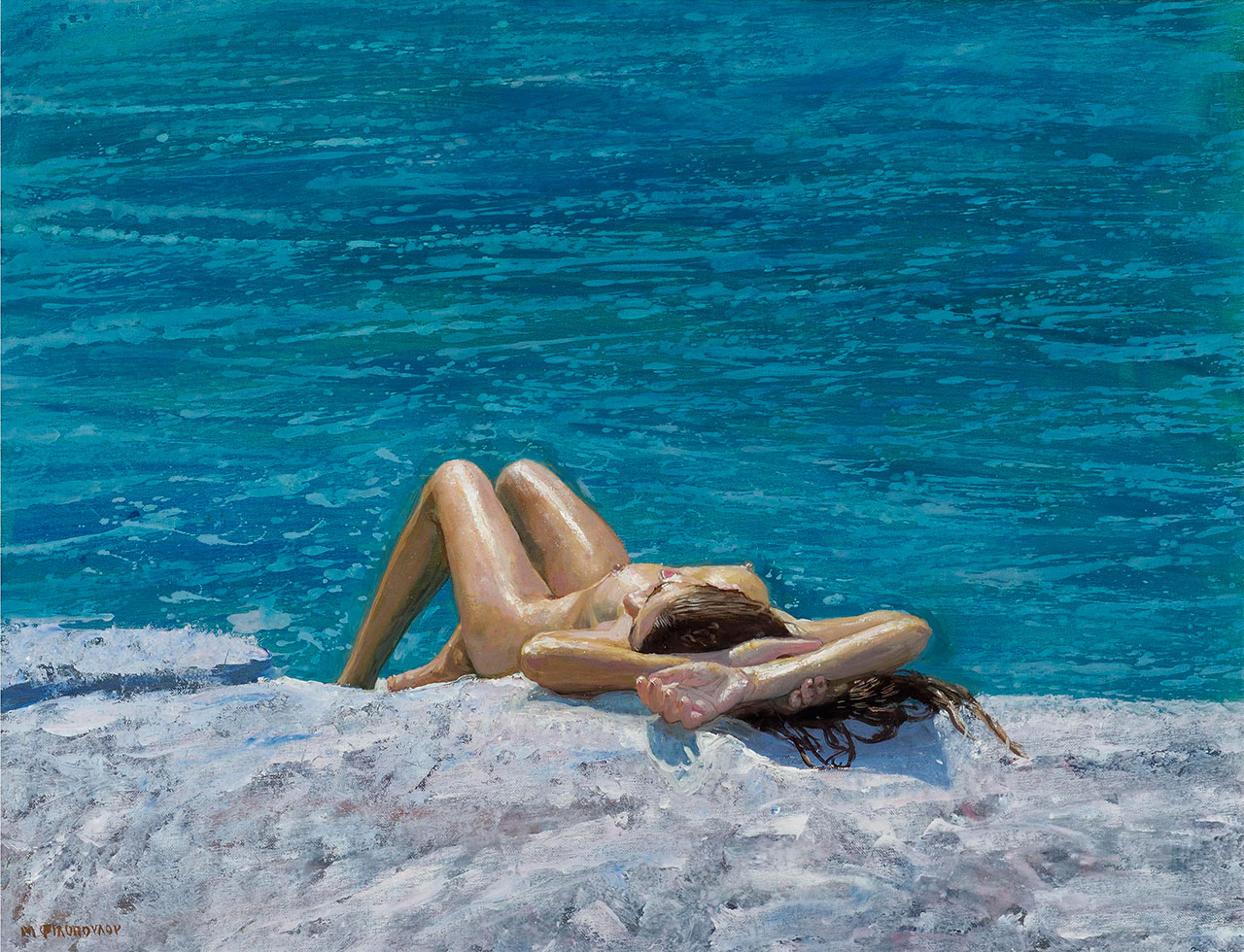
Maria Filopoulou, Nude, 2009. Oil on canvas, 60 x 98cm.
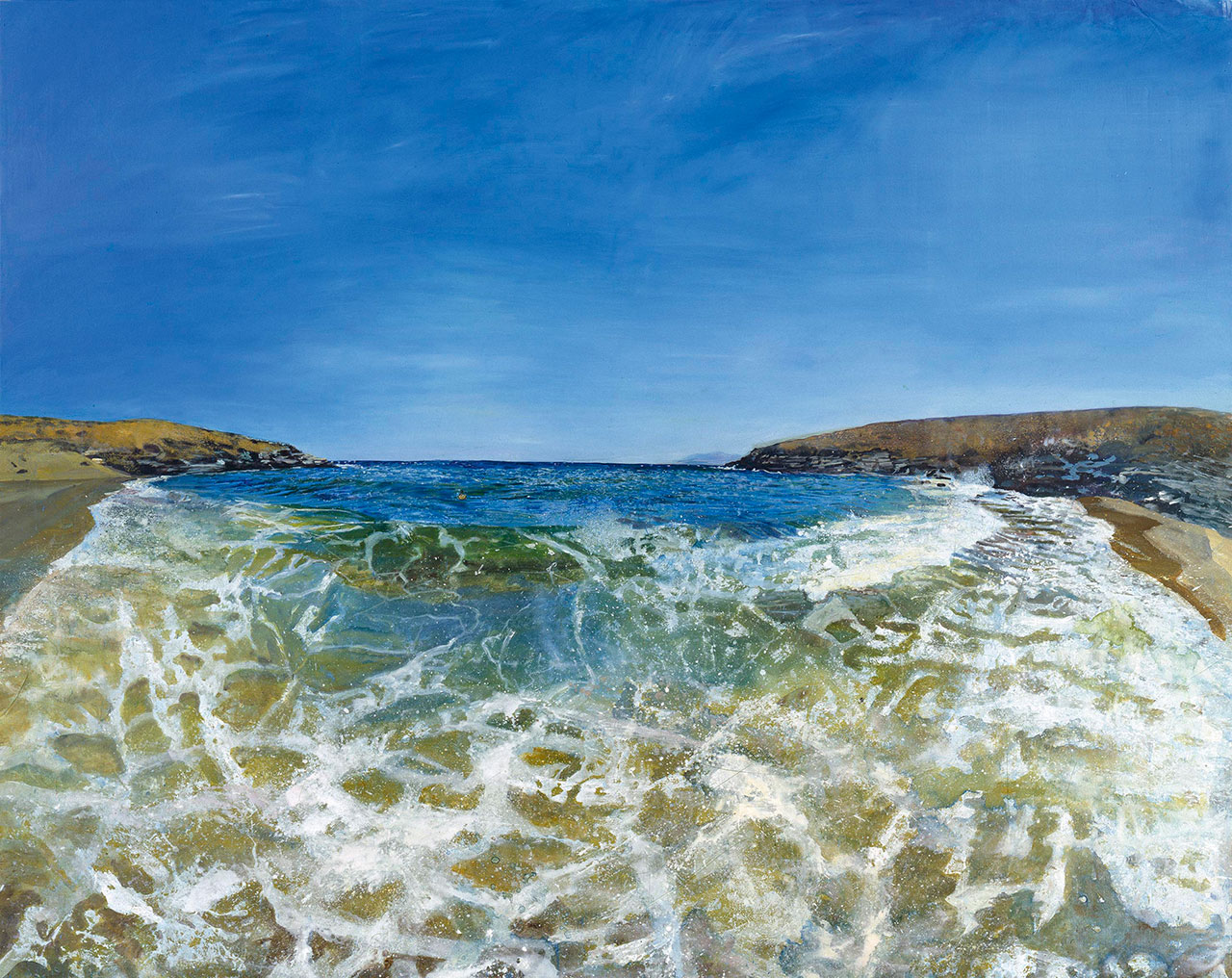
Maria Filopoulou, Sea, 1998. Oil on canvas, 200 x 250cm.
Nevertheless, Filopoulou doesn’t rely on superficial imagery to create her work. It’s important for her to have personal memories and experiences from each place; this is why she keeps painting images inspired by places she visits often, like the Greek islands or the so-called Ancient Pool in Hierapolis, a hot-spring resort in Pamukkale, Turkey. “I've visited Pamukkale for seven years in a row, and would swim in this pool filled with ancient ruins. There’s so much you can do in a painting with this setting”. The Ancient Pool of Pamukkale is indeed a hot-spring pool of a former hotel that was demolished after the whole area was declared a Unesco World Heritage Site. Originally a Roman spa city, the pool had a portico built all around it, but an earthquake in 7th century AD brought it down and all the columns ended up inside the pool. This Atlantis-like imagery inspired a whole series of paintings by Filopoulou, where she paints naked swimmers floating over a seabed covered with ancient columns and ruins.

Maria Filopoulou, View from a hydrofoil, 1998. Oil on canvas, 62 x 200cm.
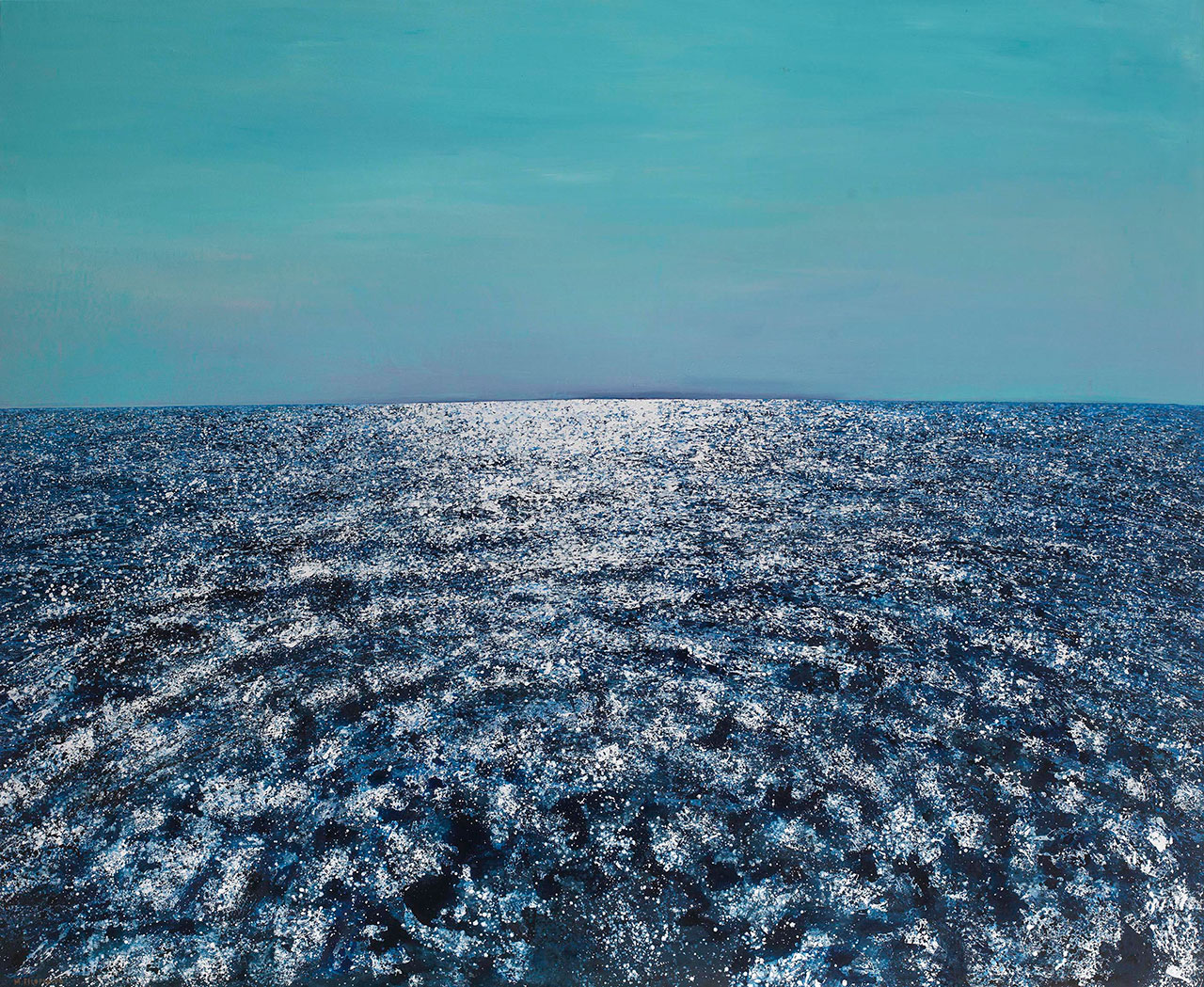
Maria Filopoulou, Sea, 2016. Oil on canvas, 160 x 200cm.
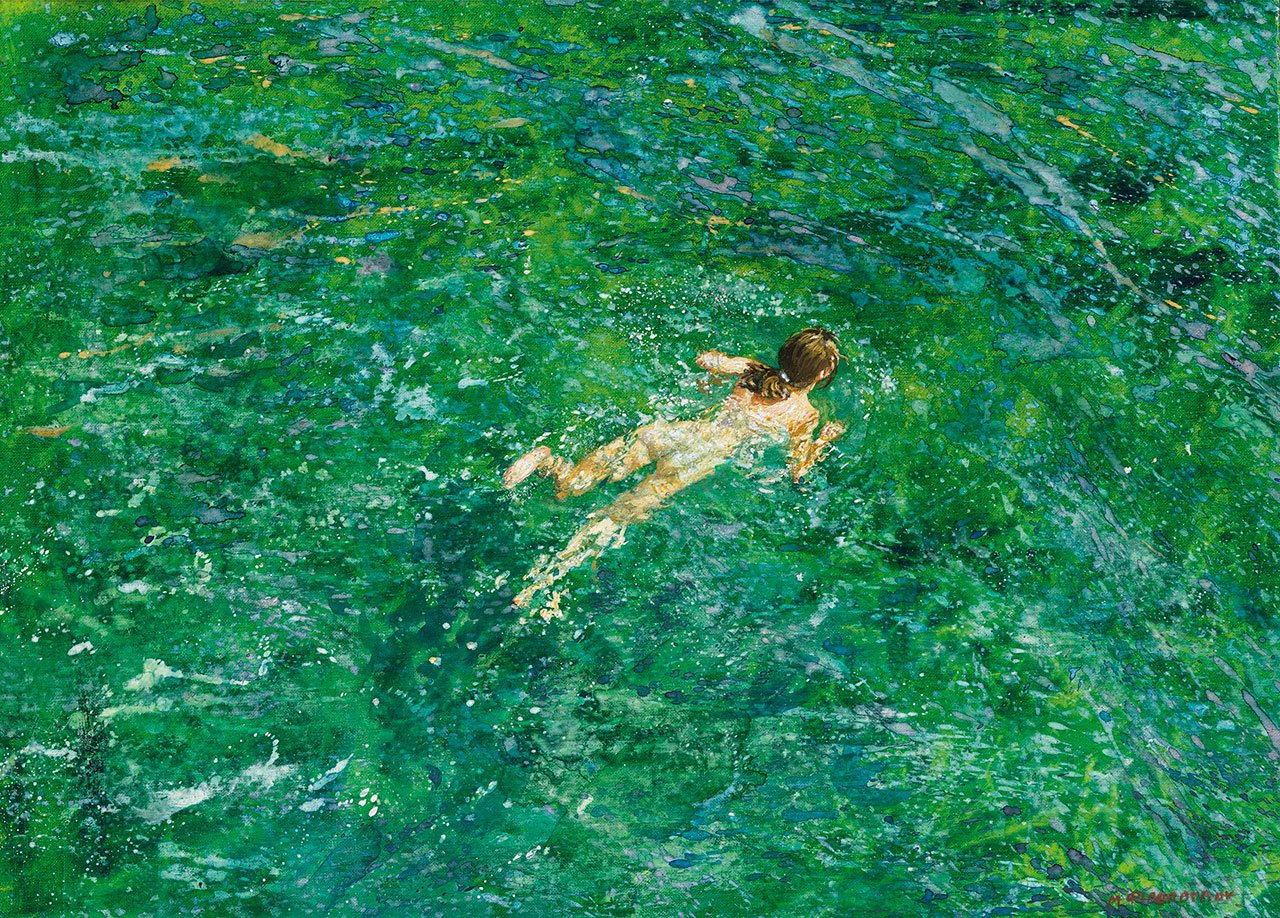
Maria Filopoulou, Swimmer, 2000. Oil on canvas, 44 x 60cm.
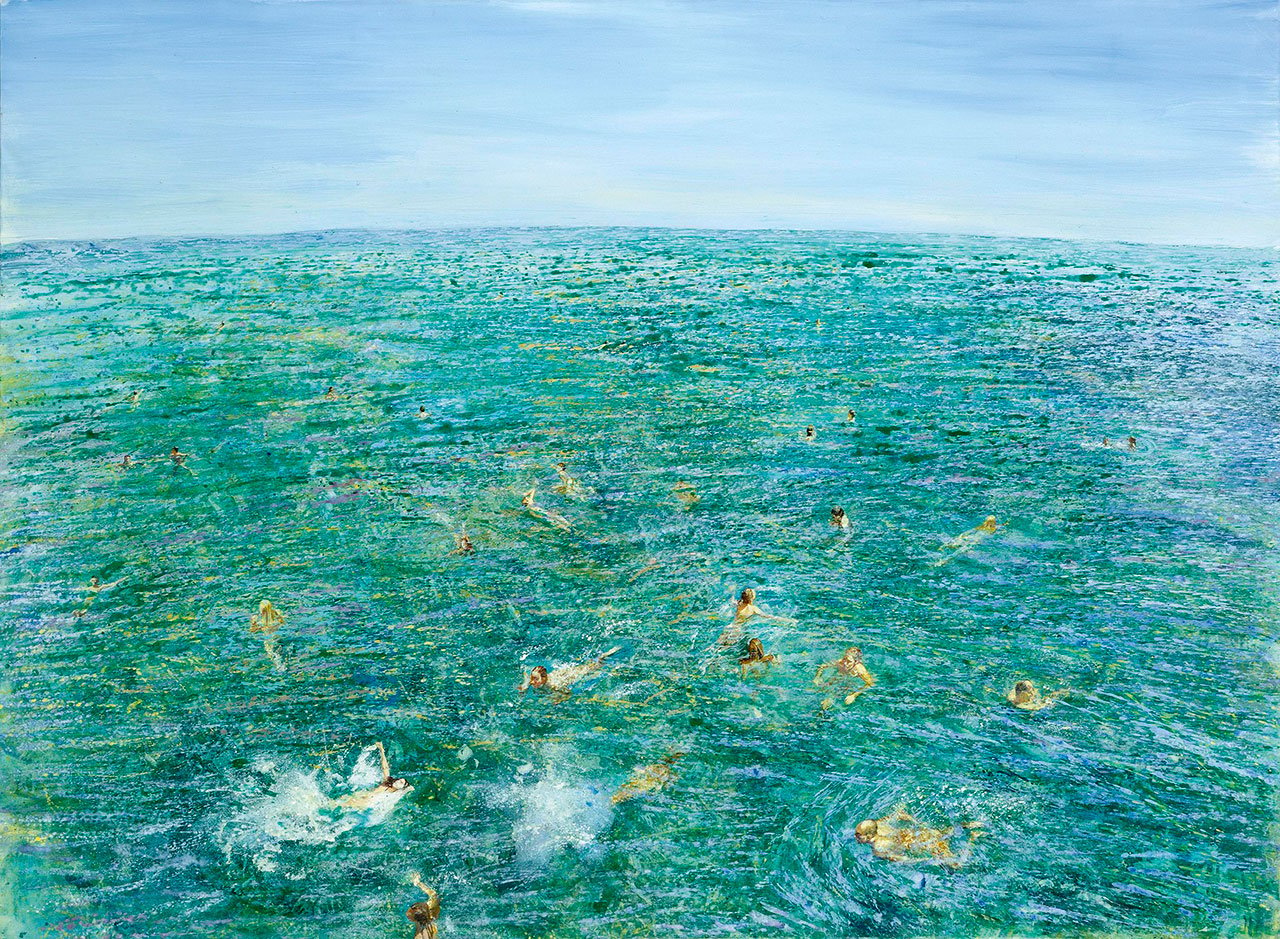
Maria Filopoulou, Swimming towards the horizon, 2001. Oil on canvas, 146 x 198cm.
Leafing through the catalogue of her most recent retrospective (Syros, 2009), Filopoulou explains how her work evolved from dark interior spaces to the vast openness and blinding light of the Greek landscape. “When I first went to Paris, I started painting closed spaces —rooms, fire escapes, stairwells... This sense of being enclosed by a space is something that runs throughout my work, right to this day. I feel that when I’m inside, I’m protected. And that makes me feel free.” This gradually evolved into her hothouse paintings soon after she returned to Greece, and her wide-angle paintings of old Greek houses. “But I often needed a change of scenery, that’s why I would go out with my sketch book and draw beaches, islands, the sea... Gradually this became the focus of my work. As you can see, I might have got a bit carried away!” For Filopoulou there’s a conscious connection between interior spaces and her underwater seascapes, in that they are both contained spaces that evoke a sense of protection. She often frames all sides of her canvases, the top with the reflecting sea surface, the bottom with the sea bed, and the two sides with rock formations. “This is for me like an embrace, almost like coming out of a sea cave to the light. I often go to Milos and dive inside the caves on the south coast, and my favourite game is to go inside the cave and then turn around to see the world outside.”
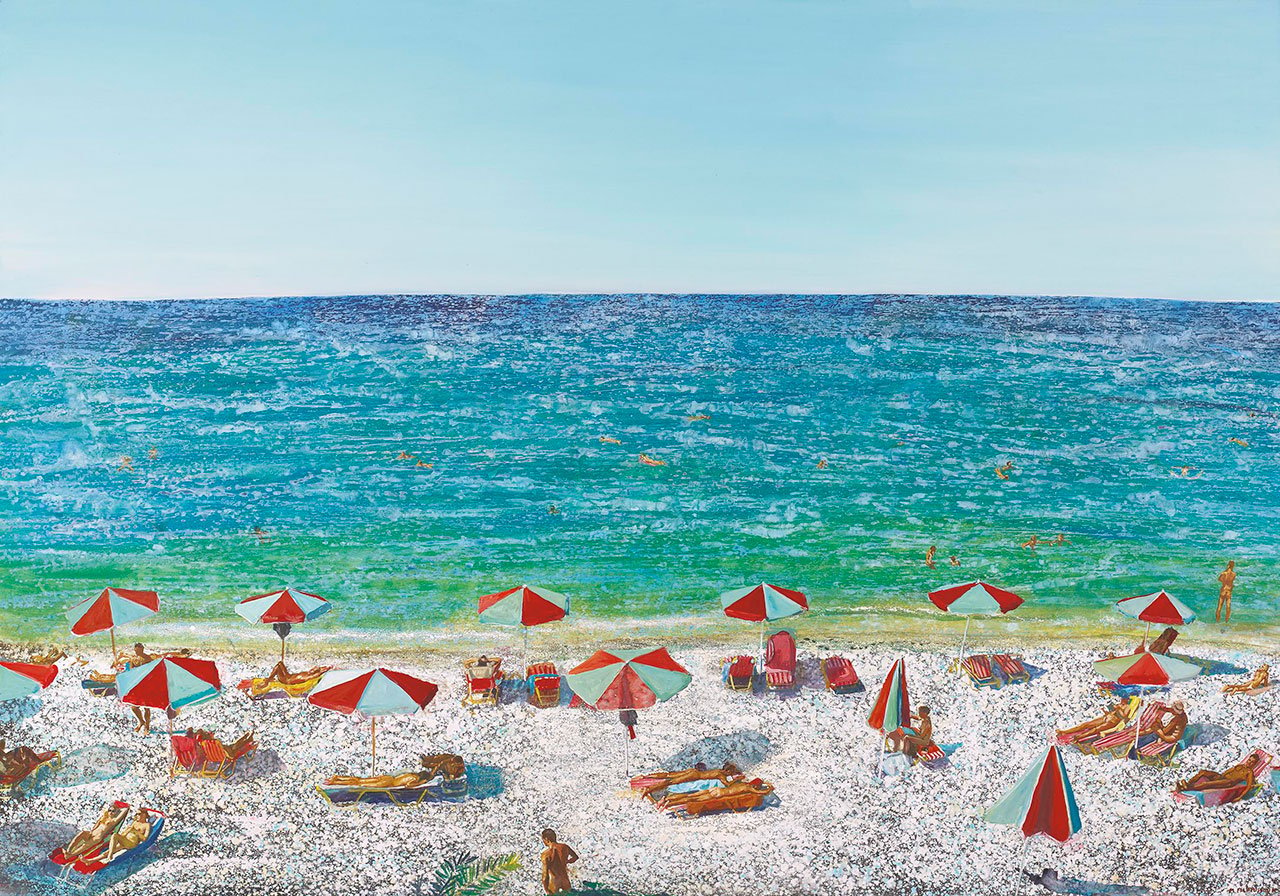
Maria Filopoulou, The beach, 2002. Oil on canvas, 180 x 250cm.

Maria Filopoulou, Parasol, 1988-1989. Oil on canvas, 63 x 189cm.
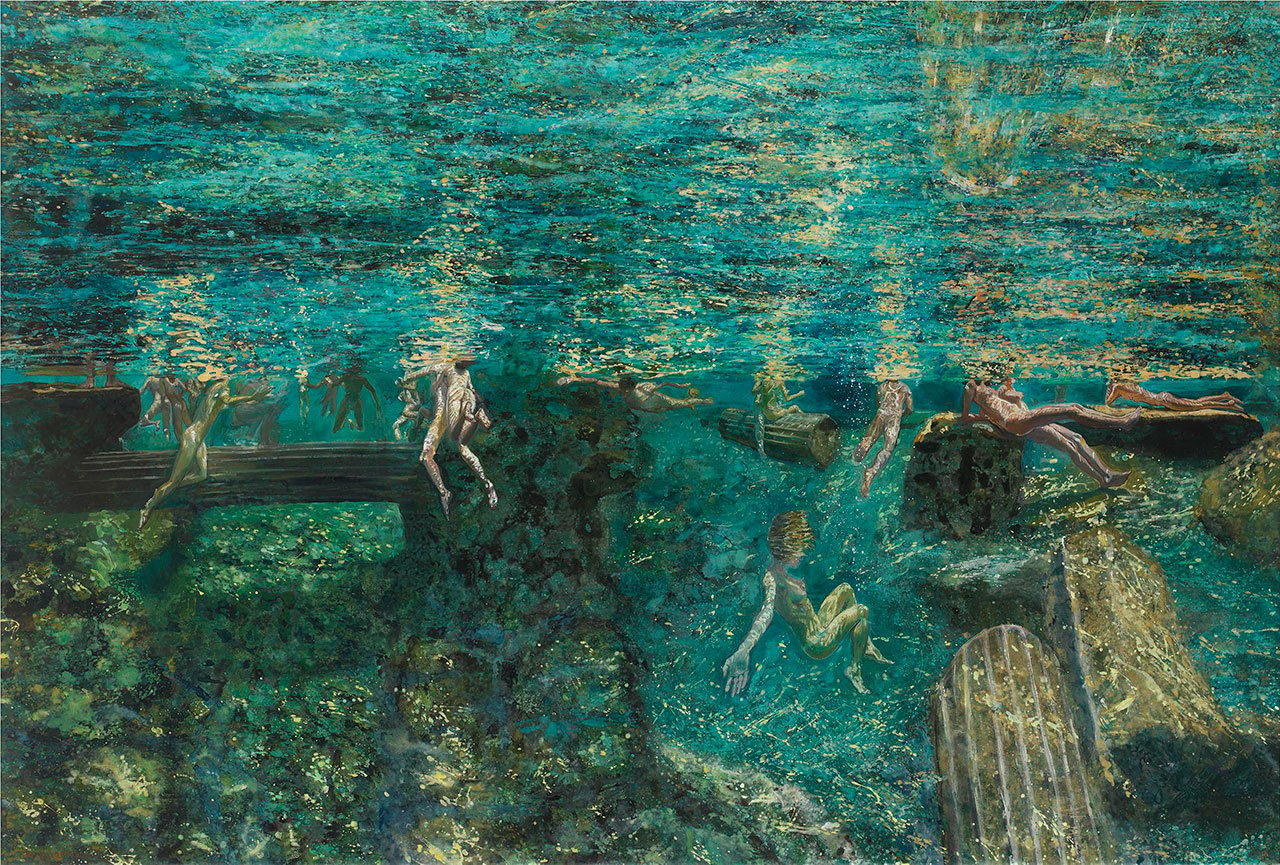
Maria Filopoulou, Underwater swimmers, ancient pool II, 2013-2014. Oil on canvas, 135 x 200cm.
The third time I hear Filopoulou mention freedom, I ask her what it is that she needs to be free and protected from. “The madness of our times” she says. “With all the chaos and crisis and all those things, I need my remedy. Some might say that my paintings are too dreamy or fairytale-like, that they have nothing to do with present-day reality in Greece. Yet I think this is my antidote to that. That’s why I called my exhibition in Paris ‘The Antidote of Water’. The ancients used to bathe in the sea before performing their rituals, perhaps for the same reason that I feel relieved and cleansed when I swim. I just wanted to convey that personal feeling to the viewer.” Despite the madness and the crisis, Greece is the only place she could ever be: “Well, I could move to a warmer place, but not a colder place! There’s also an unimaginable boom in the arts here: so many great exhibitions, new galleries, festivals... I suppose, like the water, art is our antidote.”
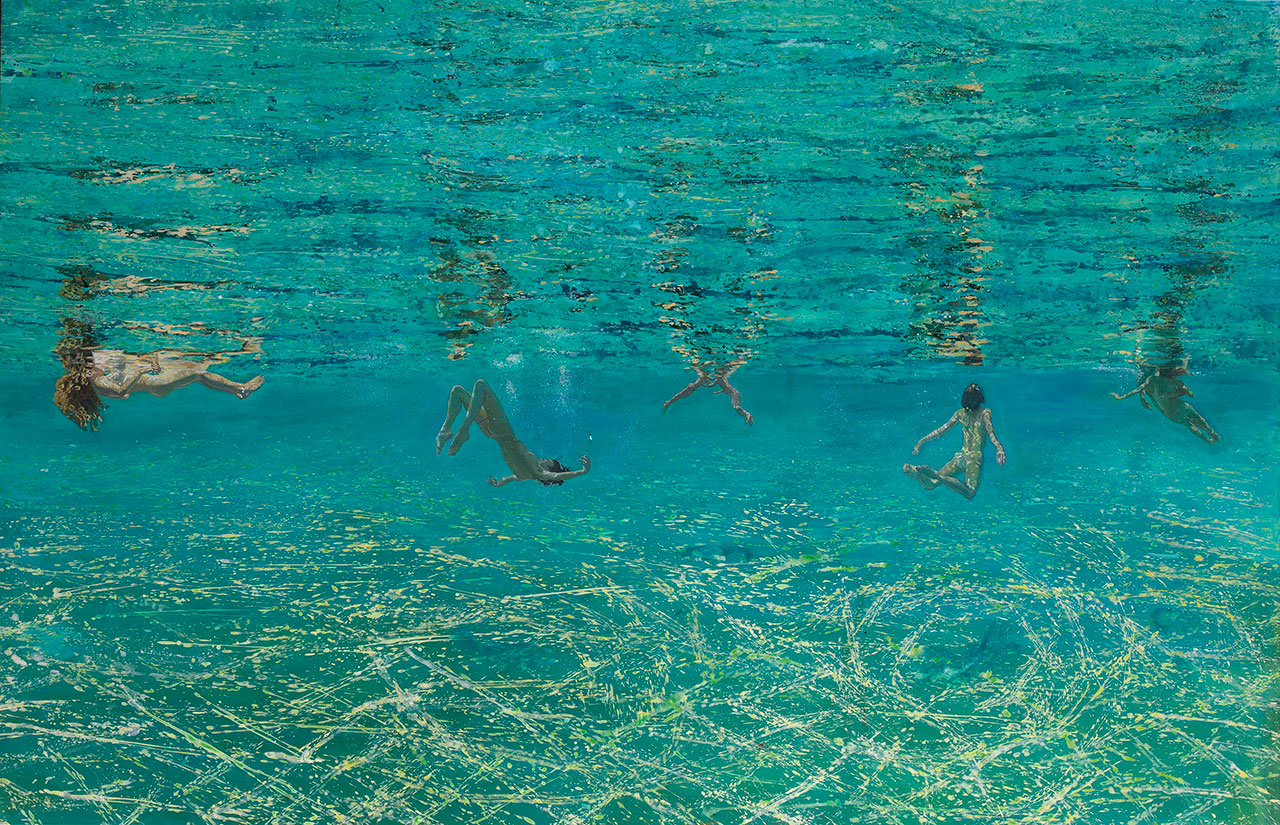
Maria Filopoulou, Underwater swimmers I, 2011-2012. Oil on canvas, 112 x 200cm.
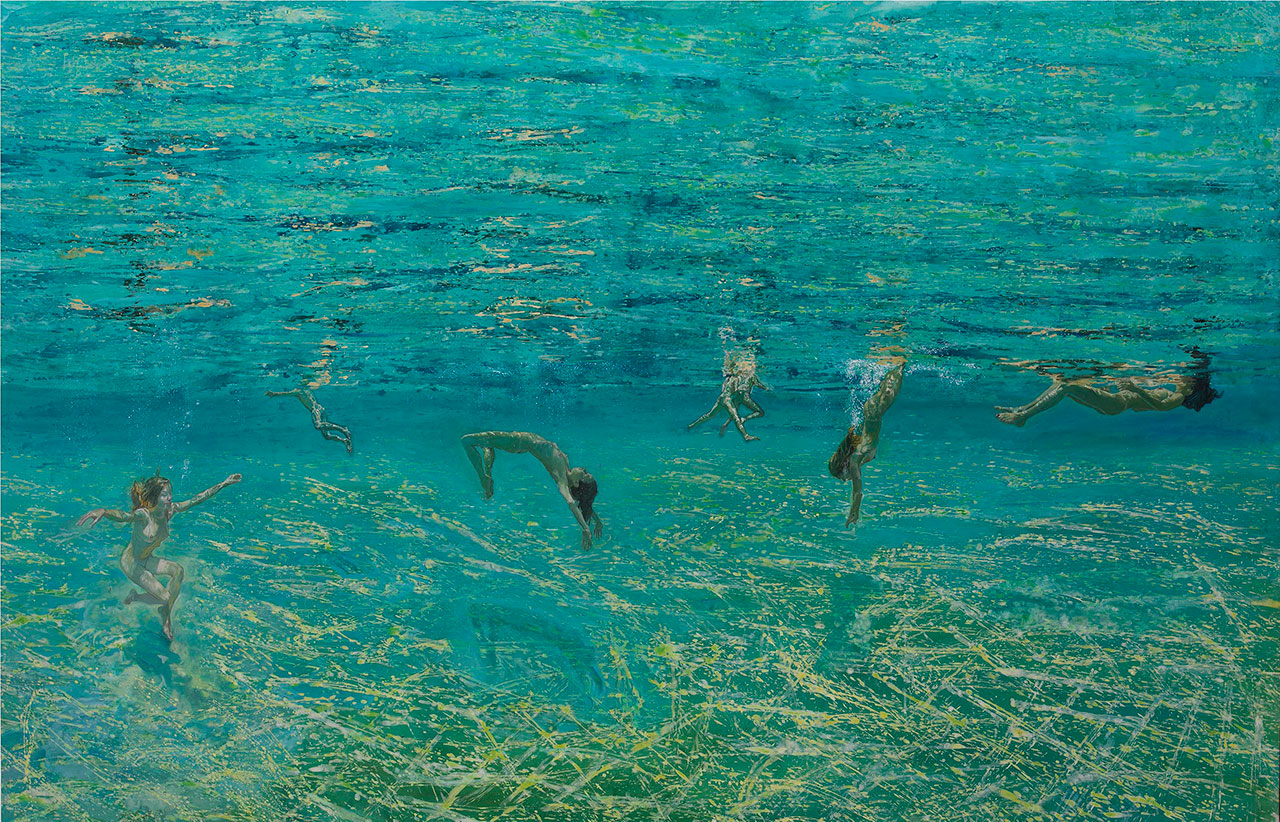
Maria Filopoulou, Underwater swimmers II, 2011-2012. Oil on canvas, 112 x 200cm.
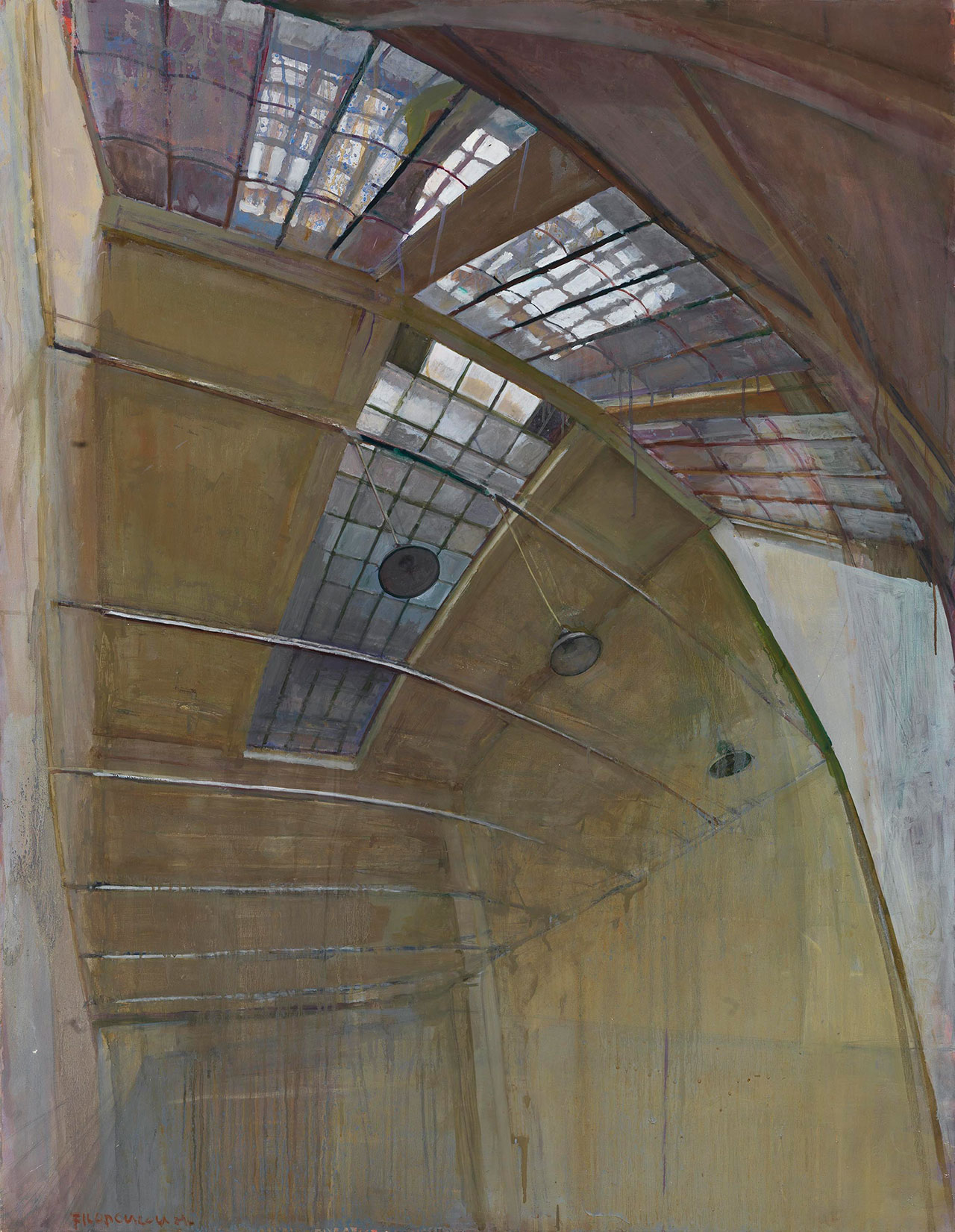
Maria Filopoulou, Skylight, 1988. Oil on canvas, 146 x 113cm.
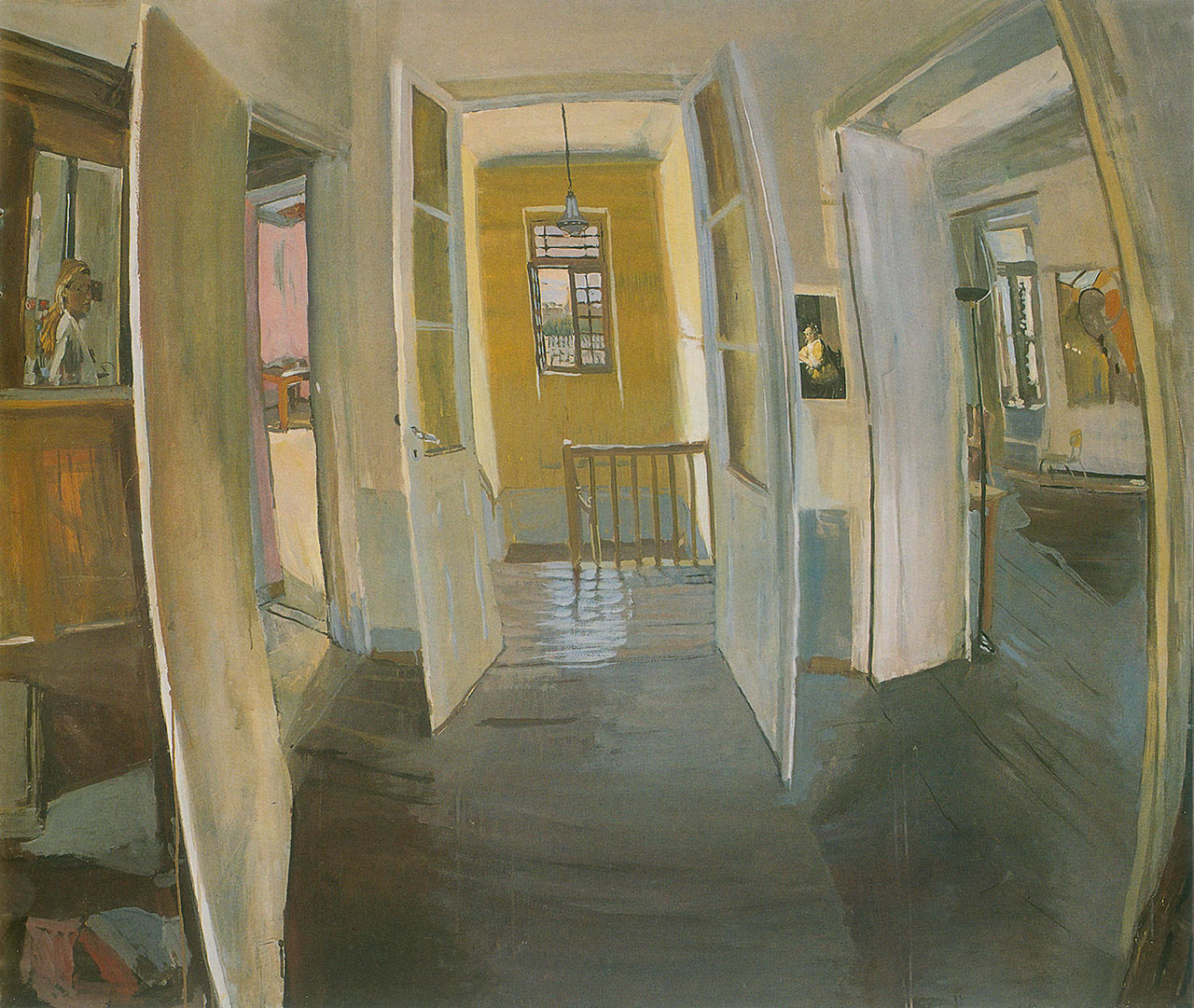
Maria Filopoulou, The window, 1992. Oil on canvas, 165 x 204cm.

Maria Filopoulou, Landscape with olive trees, 1994. Oil on canvas, 110 x 400cm.

















